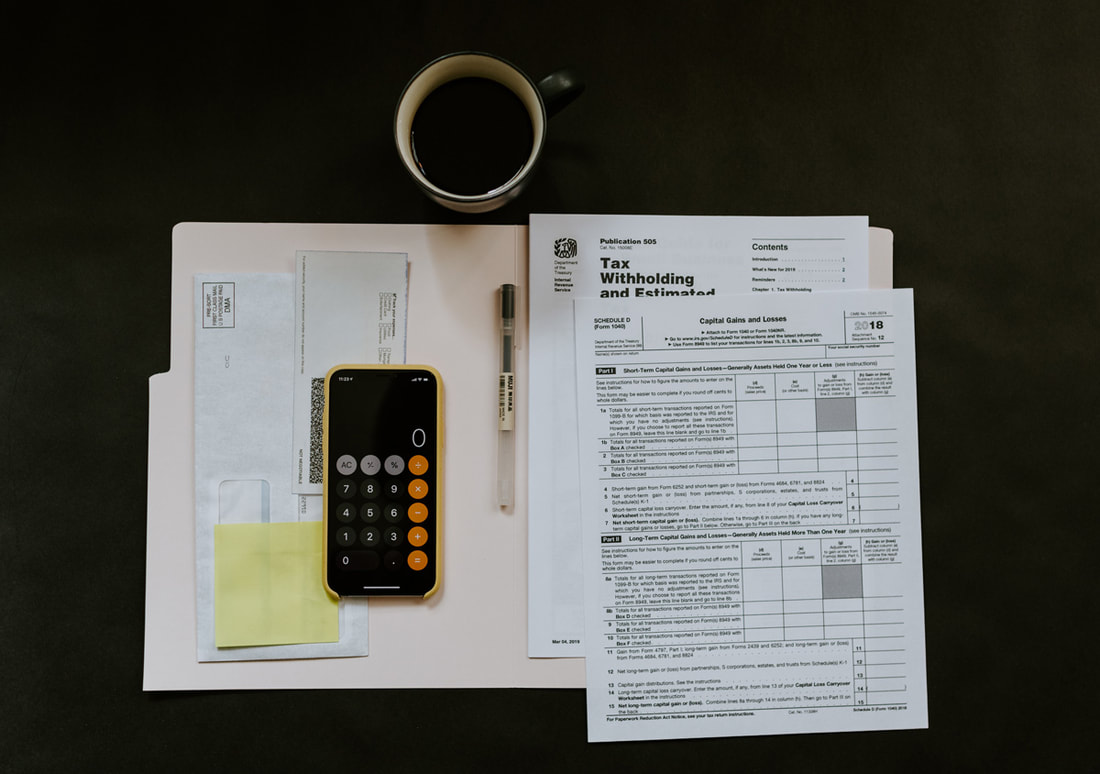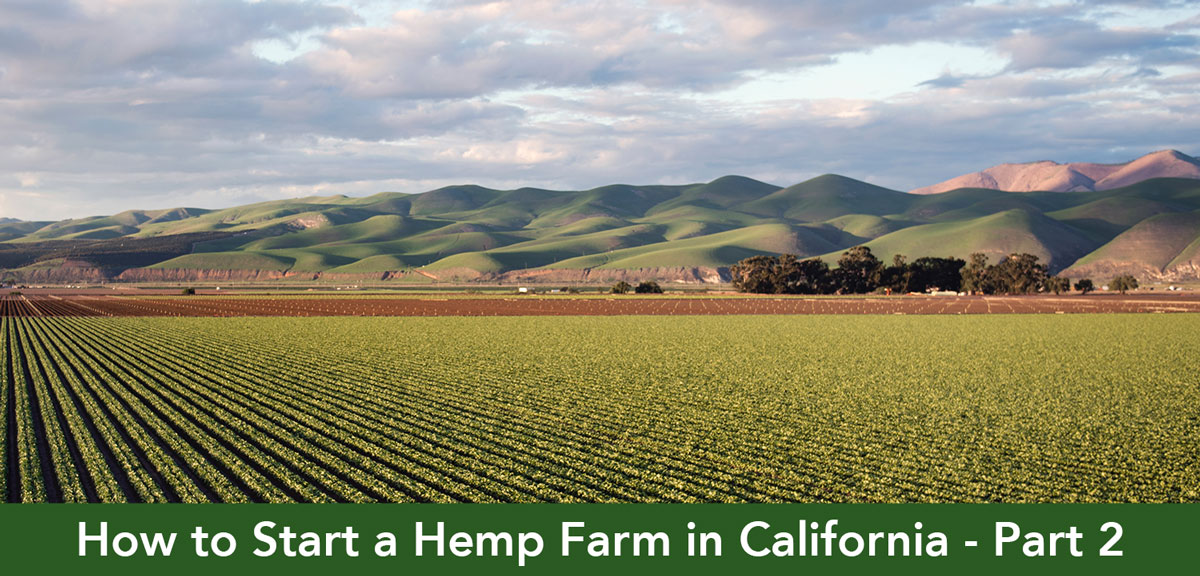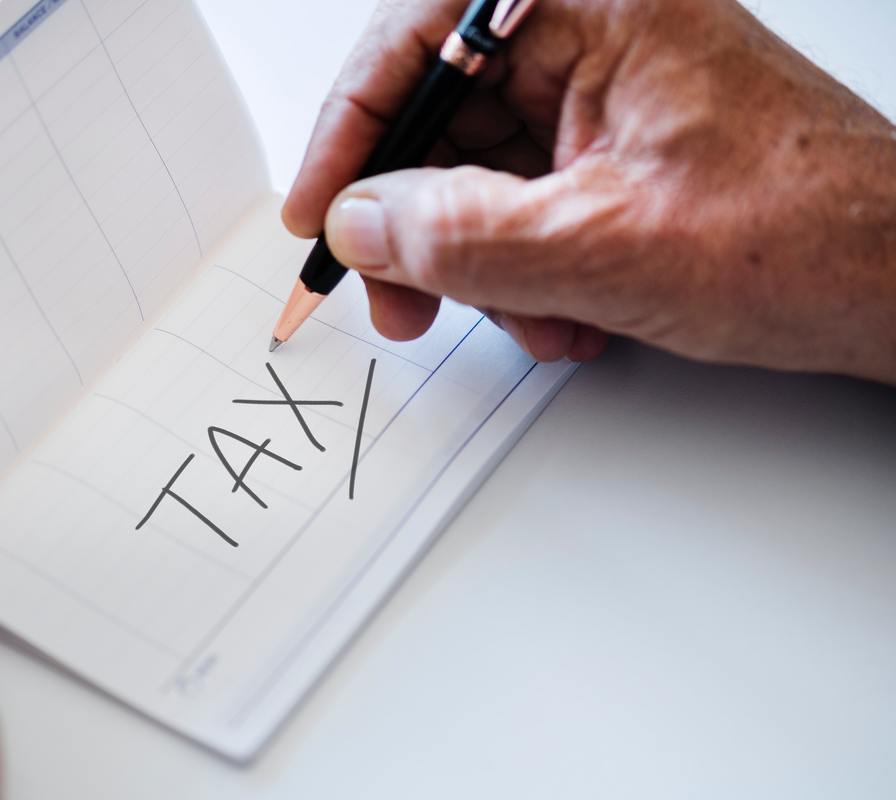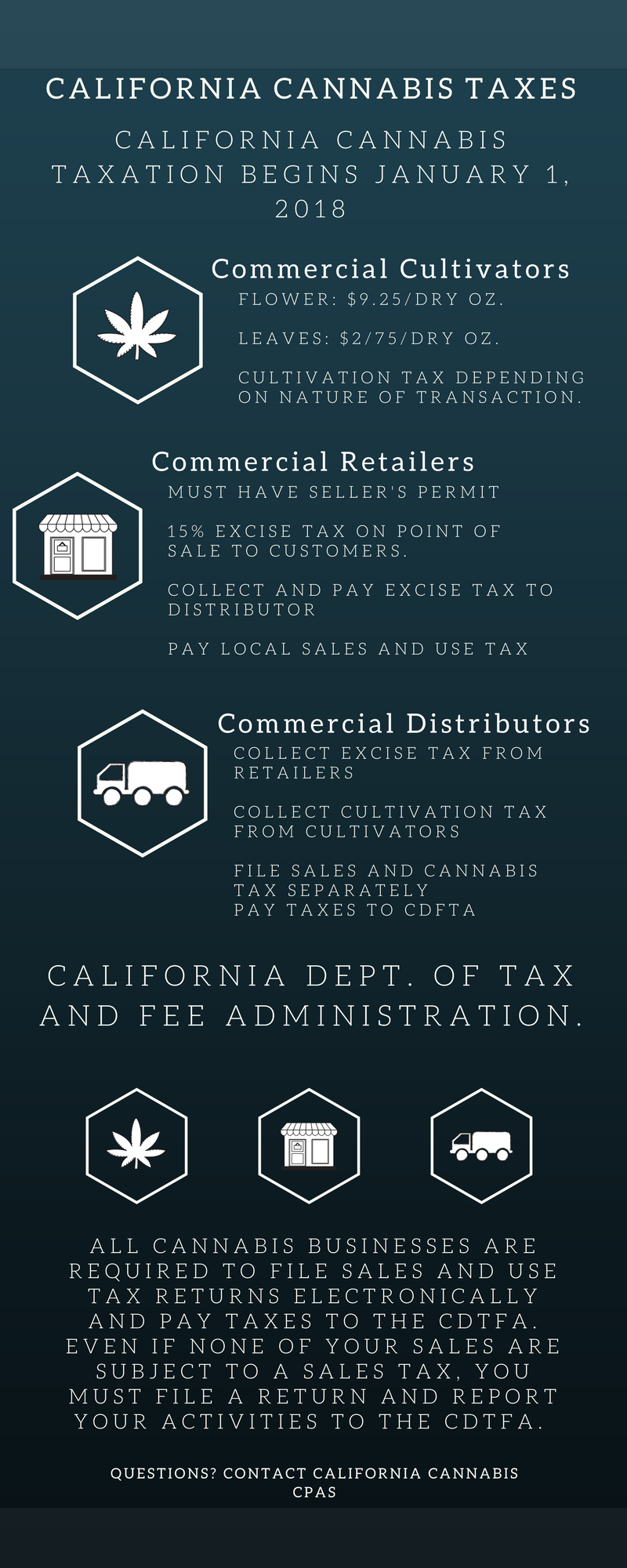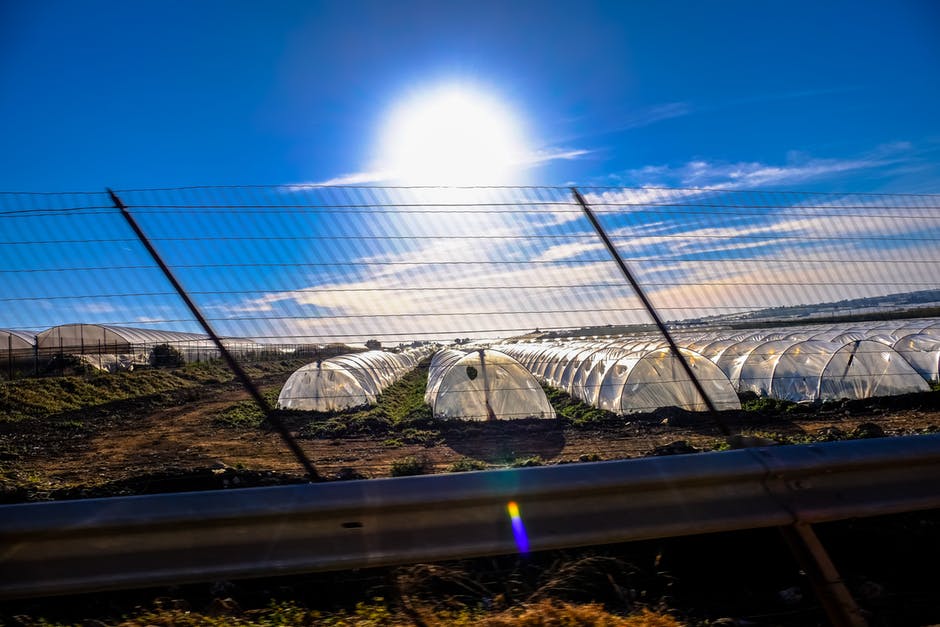|
As you know, cannabis operators have to pay many different taxes.
From sales tax to excise tax, the system is quite complex; and once your cannabis company starts to thrive, the tax system becomes even more complicated. California’s sales tax is a great example of where successful cannabis entrepreneurs get tripped up with being compliant while maximizing their profit. California’s state sales tax for cannabis operators is 7.25% – 6% state tax, plus a 1.25% mandatory local tax. Depending on where your business is located, the local tax may be an additional 3% to well over 10%. For cannabis operators who are achieving a certain amount of sales each month, you will be required to pay the sales tax monthly, rather than quarterly. Here’s how the process works, and how our experts can help you manage your tax burden more effectively. Why is proper tax reporting important?
As the saying goes, there are two things certain in life: death and taxes.
Taxes are the number one reason why most cannabis companies fail; the IRS is not shy about auditing cannabis operators, and the 280E is one of the primary tools the government uses to penalize cannabis ventures. This burdensome 280E regulation makes a lot of money for the IRS in the form of fees and fines; so much so that Colorado is able to fix roads that aren’t even broken because they have so much tax revenue. It’s important to protect you business as much as possible from the tax authorities; and the first step is to understanding cannabis sales tax and commit to paying your taxes monthly. As a side note: having a CPA prepare your taxes is best because they will use an accepted methodology for their calculations that can then be used as exhibits during a potential audit. What is cannabis sales tax?
As previously mentioned, the state sales tax rate varies slightly depending on where you are. Most cannabis organizations can expect to pay 8% - 10% of sales. Sales tax is charged at the cannabis dispensary on top of the sales price and the cannabis business tax. Here is a breakdown of cannabis tax calculations for California.
Cannabis sales tax in California is paid to the CDTFA. When you apply for a sales tax permit, the Administration will ask you a series of questions to see what your payment schedule should be. Typically, most companies pay their taxes quarterly – meaning that taxes are due April 30, July 31, October 31, and January 31 for the periods Q1, Q2, Q3, and Q4 (respectively). If you have low sales volume (meaning less than $5,000 in sales), the CDTFA may put you on an annual payment schedule. For successful, high sales organizations, it’s likely that you will be asked to pay sales tax monthly to the city and state. Here’s what that process looks like and why it’s best to have an experienced CPA calculate your payments for you. How to calculate sales tax for the state
In our experience, some clients are asked to pre-pay sales tax every single month because they have such high cannabis sales. How does this work?
In this instance, the cannabis operator must pay estimated payments for month one and month two of the quarter. Then, when the quarterly return is filed, the CPA firm squares up discrepancies from the first two months of the quarter into the third month’s payment. How do we estimate your month one and two sales? The GreenGrowth CPAs usually look at your POS software on the 20th day of the month to see your current run rate, and in addition compare that rate to the past year for the month we are evaluating. From there, we create an estimate of the monthly of ABC$$ to the CDTFA, thereby covering your state taxes. The CDTFA will now let you know that you are subject to pre-payments or any changes to the frequency of your payments. If you don’t make payments on time, then penalties and interest will be assessed. Note that these penalties are compounding – so if you are faced with a fine, pay it right away. How to calculate sales tax for your local jurisdiction
In addition to paying your state sales tax, cannabis operators must also pay city sales tax. This rate and due date varies depending on your location.
For example, if you are based in the city of Vallejo, you are required to file a monthly return based on gross receipts, rather than sales. These are due by the 20th or 25th of the following month. Get in touch with our experts or the local tax authority to make sure you know the deadline and cannabis sales tax rate you are responsible for. There’s a lot of confusion and grey area when preparing for your tax payments to the city – mostly because cannabis is an all-cash industry, and most cities aren’t equipped to process monthly payments of cash. Most cities have self-reporting taxes with no audits required (yet). It’s likely, however, that California cities are missing out on major tax revenue, and as a result will insist on proper reporting and auditing in the future. It’s best to be rigorous about your tax payments to make sure there are no issues down the road. How can you make sure you’re paying the right amount? Make sure you’re instituting great cash-handling practices and create strong SOPs. Despite having little to no access to a bank account, manage your cash responsibly to make sure everything balances correctly. Plan ahead: if you're looking at your cash or bank account, start setting up an account or repository for taxes. Put money aside each week so that you’re not forced to come up with a large sum of cash all at once. To give yourself total peace of mind, engage an accountant with specific cannabis-industry experience who can give you monthly guidance and be by your side in the event that you get audited by the city, state or federal government. Click the button below to get started with one of our experts.
In Part 1 of our guide to starting a hemp farm in California, we outlined the process for registering as a hemp farmer with the CDFA, as well as the difference between seed breeders and cultivators. This second part of our hemp farm guidance series will provide detail about the importation and movement of industrial hemp; details on manufacturing, processing, and selling industrial hemp; and tips on how to get started in this new market.
Hemp Importation Guidelines from the CDFA
Obviously, the first step in starting a hemp farm (after registering with the CDFA) is to procure hemp seeds. Remember, there are some conflicting laws at the federal level in regards to the legality of growing hemp. It’s not possible to import seeds from outside the US to California, per federal regulation from the USDA. However, California state law does not have any restrictions to the importation of industrial hemp seeds or plants from other states into California.
The CDFA requires all industrial hemp seeds and plants to pass plant pest quarantines, and may inspect your hemp seeds further at their discretion. Likewise, the California Food and Agriculture code requires that registered growers and seed breeders only grow hemp varieties from an approved list of seed cultivars. Of course, this regulation does not apply to seed breeders developing new seed cultivars. Selling Hemp in California
Where can you sell the hemp you grow on your farm? It’s possible to sell hemp through the California Farmers’ Market (CFM) Program. You must first be certified as producer through the CDFA's CFM Program. You may also be able to sell hemp in a licensed cannabis retail store; however, cannabis retailers are governed by the Bureau of Cannabis Control (not the CDFA). Therefore, you should get in touch with the BCC to be sure you meet the cannabis industry’s strict regulations before adding hemp to a cannabis dispensary.
Starting a Hemp Farm in California
By some estimates, more than 25,000 products can be made from hemp. Hemp is used in everything from the automotive industry to personal care products. California is a leader in the hemp market: California companies earn 77% of nationwide sales of hemp food and personal care products.
Hemp is a plant that thrives in California’s environment. It does well in warm weather, and grows best in well-drained, highly organic soil. Experts recommend planting hemp seeds directly in the ground, rather than starting the plants in a pot and transplanting them later on. You will need a lot of space: for hemp to be profitable, you must plant at least 50 acres. Besides space, hemp has relatively few other needs. It’s resistant to pests and diseases, and grows fast and tall, minimizing the need for hand cultivation. Estimates from a recent Cornell University analysis found that hemp profits ranged from $130 to $730 per acre. A good way to get started in California’s hemp industry is to go to a workshop by the California Hemp Association to learn about the constantly changing forms, fees, and regulations and other information coming from the CDFA and the USDA. You should also speak to our experts about the registration process and to get your taxes in order before entering this new market. Click the button below to get started. Each week, our experts get lots of questions about California’s seller’s permit. How do you get one? Who needs one? What does the application ask for? Is it separate from every other permit and license? There seems to be a lot of confusion out there surrounding the seller’s permit, which is required not just for cannabis operators. With this guide, we hope to answer many of these questions and provide some insight into how the CDTFA evaluates the cannabis seller’s permit.
California Seller’s Permit: Required Information If you are doing business in California and intend to sell or lease tangible personal property subject to sales tax sold at retail, you are required to have a seller's permit. Likewise, you have to prominently display your permit at your place of business. Basically, anyone working in the cannabis market in California needs a seller’s permit. For a California state seller’s permit, you must apply online with the following details:
As a cannabis operator, you also need to submit:
If you have a business partner or if your cannabis operation is managed by corporate officers or limited liability company managers or partners, you will be asked to include some of their information in addition to your own. The seller’s permit is different from your cannabis tax permit or cannabis business license. If you are a distributor of cannabis and cannabis products, you must obtain a SEPARATE cannabis tax permit in addition to your seller’s permit. You can apply for your seller’s permit on an open basis. There is no deadline or application window to apply for your seller’s permit. The online system guides you through the whole process and lets you know what documents you need to submit. There are also a handful of field offices you can visit where the CDTFA will walk you through the application process. If you go in-person, you get your permit right when you finish applying. Unlike the cannabis licenses, you are not being ranked against other cannabis companies. However, you must apply for a cannabis business permit before attaining your seller’s permit. The seller’s permit application will ask you for a cannabis license number. Start with your state and local licenses before spending the time and resources to obtain your seller’s permit. For help with any licensing matter, get in touch with our experts. Last week, we covered some key findings for cultivators, distributors, and retailers released in the California Cannabis Advisory Committee 2018 Annual Report. The CAC provides recommendations o the California’s cannabis licensing authorities, and helps set forth priorities when it comes to the standards and regulations of the cannabis market.
Today, we’ll outline what the CAC recommended for Manufacturers, Licensing Applications, Microbusiness and Enforcement. It’s important to keep an eye on this committee, as they can have direct impact on the regulatory environment for your cannabis operation. Here’s what the committee accomplished last year. CAC Subcommittee for Manufacturers Last year, the Advisory Council’s Subcommittee on Manufacturers made a total of four recommendations. The licensing authorities moved forward to implement two of these recommendations, partially implemented a third, and declined to implement one.
Please note that the CDPH website has been updated to include more than 20 FAQs on packaging and labeling as well as some additional checklists to come. The CDPH intends to release a revised set of checklists, updated FAQs and an illustrative guide after adoption of the permanent regulations.
CAC Subcommittee for Licensing Applications This subcommittee specifically addressed the risk of large, consolidated cannabis operators dominating California’s nascent cannabis market. The Subcommittee for Licensing Applications was primarily concerned with adding transparency to the licensing process; offering financial relief and lowering barriers to entry for new applicants; encouraging marketing stability; and protecting the health and safety of workers in the cannabis industry. As a result, the Subcommittee had four recommendations which were adopted by the committee, of which two were implemented, one was partially implemented, and not implemented one.
CAC Subcommittee for Microbusinesses Cannabis microbusinesses are operators that meet a minimum of three out of four of these allowed commercial cannabis activities:
The Subcommittee for Microbusiness offered four recommendations, of which one was partially implemented and three were not implemented.
CAC Subcommittee on Enforcement Last, but not least, the Subcommittee on Enforcement is dedicated to improving public safety and protecting the business interests of the cannabis operator. They strive to “ensure that there is a balance between allowing for the feasible operation of cannabis businesses while deterring illegal and criminal activities.” The Subcommittee adopted five recommendations; in response, the licensing authorities implemented two, partially implemented one, and declined to implement two.
If you have any questions about the CAC or their policy recommendations, please get in touch with our experts. You can also read the full 2018 Annual Report, which covers every Subcommittee statement, to see more about how the regulations in California continue to evolve. The Bureau of Cannabis Control (BCC) has, on several occasions, released guidelines regarding required cannabis testing. This means that if you are legally operating a cannabis business, you need to adhere to these guidelines in order to meet state requirements. Per the BCC’s guidelines, there are three categories that cannabis and cannabis products fall under: inhalable cannabis, inhalable cannabis products, and other cannabis and cannabis products. Cannabis Operator Responsibility It is every responsible commercial cannabis business operator’s duty to ensure that all their cannabis and cannabis products are tested, and, if sold, have passed these tests. Cultivators must have their product tested through their distribution partners, and retailers must ensure the products they are selling to the public have passed all quality control tests. Providing the patients and customers with safe, effective, potent, and high-quality cannabis and cannabis products should be every operator’s number one priority. Lifting the stigma of cannabis can be done with responsible cultivation, manufacturing, distribution, sale and administration of safe and effective cannabis and cannabis products. Roll Out Dates Since the roll out date for all legal cannabis facilities and business was January 1, 2018, the BCC provided three phases for various test types that all cannabis and cannabis products must undergo. The first phase covers all cannabis and cannabis products that were harvested and manufactured beginning January 1, 2018. The second phase began on July 1, 2018, and the third phase will begin on December 31, 2018. The third phase will require that all three cannabis and cannabis product categories to undergo the comprehensive battery of tests in order to comply with state regulations. As we come to the end of 2018, please make sure you are compliant with the BCC testing regulations. Since annual state licenses will be the focus of the BCC activity in 2019, we expect little to no changes to their existing testing requirements. Testing Types To recap, the comprehensive battery of cannabis and cannabis product test types have been spread out over three phases as follows: Phase I: January 1, 2018 Cannabinoids Testing Moisture Content Testing Category II Residual Solvents and Processing Chemicals Testing Category I Residual Pesticides Testing Microbial Impurities Testing (A. fumigatus, A. flavus, A. niger, and A. terreus) Microbial Impurities Testing (Escherichia coli and Salmonella spp.) Homogeneity Testing of Edible Cannabis Products Phase II: July 1, 2018 Category I Residual Solvents and Processing Chemicals Testing Category II Residual Pesticides Testing Foreign Material Testing Phase III: December 31, 2018 Terpenoids Testing Mycotoxins Testing Heavy Metals Testing Water Activity Testing of Solid or Semi-Solid Edibles Inhalable Cannabis
Inhalable Cannabis Products
Other Cannabis and Cannabis Products
Failed tests
If your cannabis and/or cannabis products fail to pass the required testing and cannot be remedied, then, according to State Regulations, the entire batch must be destroyed. This obviously has an impact on your bottom line: cutting losses means implementing industry best practices. We recommend you continually engage the services of testing laboratories at fundamentally significant steps in the cultivation and manufacturing process. This could potentially save your cannabis and cannabis products from failing tests and destruction. Compliance Assistance If you are a commercial cannabis operator and need assistance and/or guidance with compliance, contact a team member today. Part of every operator’s responsibility is to meet state regulations and incorporate best industry practices into your operations. California’s permanent cannabis regulations were reportedly finalized on Monday, December 3, although operators may not be privy to the new regulations until January 2019. State officials have decided not to make the rules public until the Office of Administrative Law (OAL) has finished conducting its review.
The news is frustrating, but it also makes it hard to prepare your business for the potential impact of the permanent cannabis regulations. Here’s what we know about the most recent draft of California’s permanent marijuana business regulations – and how you can prepare for 2019. What are California’s permanent cannabis business regulations? The permanent business regulations related to the cannabis industry are joint effort of California’s Bureau of Cannabis Control, Department of Food and Agriculture, and Department of Public Health. The regulations cover a variety of issues related to cannabis, including delivery, packaging, and events. Experts who have studied the proposed regulations warn that these rules will hurt current operators. Here are a few of the key changes that may affect your business. End to Contract Manufacturing All licensed companies could be barred from doing business with a commercial cannabis company lacking a license. Contract manufacturing, commonly known as white labeling or co-packaging, is a way for licensed manufacturers to produce and package products for those businesses that are still unlicensed. We see this partnership commonly with celebrity-endorsed brands or an established cannabis company that has a production facility located in a municipality which does not allow for commercial cannabis. This is simply the best way to do business for many operators who are hamstrung by the varied cannabis allowances from county to county. If this rule ends up as part of the final regulations, it could put many contract manufacturers out of business. New Delivery Regulations The proposed rules reduce the amount of cannabis product a single delivery vehicle can transport from $10,000 to $5,000. The economics of this rule change could have big implications for licensed cannabis operators. Currently, the $10,000 limit allows for drivers to leave for their delivery window with one order for $100 and $9,900 in additional product to fulfill orders as they come in. However, the rule change forces drivers to leave with at least $2,000 in product designated for orders already placed. This leaves just $3,000 available for fulfilling orders while on the go. Obviously, this severely restricts the sales opportunities for delivery operators and damages the customer experience. Slower service is bad for business, and the higher overhead of making more trips to and from the delivery hub could put some companies in the red. New Disclosures for Business Owners If you have a cannabis business license or own a financial stake in a cannabis venture in California, you will be reclassified as a “salesperson” or “consultant” under the proposed California cannabis business regulations. Why is this important? The key to this rule is the part where any employee who has a say in what the business should sell, manufacture, or cultivate will be considered an owner. More individuals will therefore have to file state disclosure paperwork. Logistically, this becomes a bureaucratic nightmare. What’s even more concerning is this provision could amount to a ban on silent partners, with big implications for those ventures still seeking funding. How to Prepare for California’s New Regulations Until January, we won’t know which of these proposed regulatory changes made it into the permanent bill. However, it’s prudent to start preparing your business now. Talk to your silent investors to make sure they’re aware of the changes in disclosures. If you need to find a new investor for your cannabis business, it’s better to start now. If you run a delivery service, take a look at your operating budget to see if you have space to hire extra vehicles and drivers. You can also prepare your customers by asking for minimum orders or changing up the checkout process in incremental changes. Minimize the disruption to the user experience by making small adjustments to your delivery service ahead of time. Finally, if you’re working with a contract manufacturer, protect your business by seeking a plan B partner. Lock up relationships with other licensed operators now, as competition is only going to get steep. For more on the proposed regulations, get in touch with our experts today.
Every cannabis business operator in California is required by state laws to have insurance. There are quite a few insurance agencies and brokers that offer cannabis business-specific insurance packages. As recently as this June, California began offering property insurance for cannabis businesses. In a cash-rich industry that deals with a very valuable product, you may want to look into insurance to make sure your business is protected. Regardless, it’s up to you to make sure your insurance is meeting the state, local, and federal requirements and standards. Here’s a quick guide to your state, local, and federal insurance responsibilities as a cannabis operator in California.
California Cannabis Insurance Requirements California requires cannabis businesses to have a minimum commercial general liability insurance policy of $2 million, with insurance of up to $1 million for each loss, when submitting a cannabis license application. The state also requires a $5,000 surety bond that should be addressed to the state of California. Anyone who does not meet the insurance requirement will likely have their business application rejected. Likewise, if your cannabis business insurance lapses, you must take the proper steps to alert the state by notifying the Bureau of Cannabis Control in writing within 10 days. Types of Insurance for Cannabis Companies What other insurance do you need in California? Especially as it pertains to your cannabis licensing application, you will want to have a policy for worker’s compensation insurance for your employees. The state also requires all small businesses to have disability insurance. Our experts also suggest looking into these other types of cannabis business insurance:
To help you understand which, if any, of these additional insurance types would be most helpful for your cannabis venture, we have a guide on everything you need to know about California cannabis insurance. Check it out and get in touch with our experts if you have any questions. Federal Insurance for Adult-Use Cannabis Businesses Because cannabis is still considered a Schedule I drug by the DEA, there is no official requirement from the federal government requiring a cannabis business to have insurance. However, there may be other small business insurance requirements your cannabis venture needs to meet to be compliant. Health insurance is required at the federal level – one option for businesses with one to 50 employees is the Small Business Health Options Program (SHOP) program. Generally speaking, the federal government defers insurance requirements to be decided at the state level. As a rule of thumb – with the exception of ACA regulations, make sure you’re meeting California’s insurance requirements, and you should be compliant under US federal law. It’s also worthwhile to note that when it comes to deducting insurance from your tax return, the regulations are a little complicated due to the 280e regulation. It really depends on your specific role in the cannabis industry – commercial general liability insurance may be deductible as a COGs for some businesses, but not for others. It’s important to check with a tax expert to make sure you’re making the right choice for your insurance deduction. If you have more questions about cannabis insurance, please get in touch with GreenGrowth CPAs today! As we covered in previous posts, finding properly-zoned real estate is one of the most important - and difficult - parts of starting a cannabis business in California. The real estate market in California is competitive already, and so-called “green zone” regulations severely restrict where cannabis businesses are allowed to operate.
Nevertheless, it’s imperative that you find real estate for your business before the city or county application window opens. Competition is simply too fierce to wait until the city announces they are ready to start approving business applications. Plan ahead to find cannabis-ready property with this quick guide on California’s cannabis zoning laws. California’s Cannabis Zoning Laws California state regulation SB94 allows the 482 cities and 58 counties in California to regulate land use and zoning in relation to cannabis within their jurisdictions. What this means is that cannabis zoning laws not only vary by location, but also by the type of business activity. For example, cannabis dispensaries will abide by different cannabis zoning laws than cultivators or manufacturers. Note that cities or counties with no legal cannabis activity will not provide zoning information related to cannabis businesses. As far as growing cannabis, it can be tricky to discern regulations by city and state. Research shows that a slight majority of cities have banned outdoor cannabis gardens, while others have specific home-grow permits that may relate to smaller cannabis businesses as well. To find a specific zoning law in your area, the Orange County Register has compiled a database of cannabis zoning laws by city and county (last updated June, 2018). Common Cannabis Zoning Laws Each city and county customizes their cannabis zoning laws. However, there are a few commonalities that our experts tend to see in many zoning policies. If you’re seeking property, here are some things to keep in mind:
Green zone regulations may not be announced if a city hasn’t opened their cannabis business applications yet. Regardless, it’s important to stay informed about the city’s ordinances and available commercial property. When the applications do open, be prepared by contacting California Cannabis CPAs and asking how we can help. Recently, our experts led a webinar outlining everything you need to know to get your Los Angeles cannabis business license. If you missed it, you can listen to the full webinar on-demand. We covered many topics, including Los Angeles’ cannabis social equity program.
Los Angeles’ cannabis social equity program is a part of the city’s commercial cannabis licensing system. The goal is to give a boost to past victims of cannabis criminalization by offering assistance and benefits to any communities that were unfairly punished by the drug war. Read on for more information on how this program works and how your cannabis business might be able to participate in the program. What is Los Angeles’ Cannabis Social Equity Program? LA’s social equity program has the stated goal of promoting “equitable ownership and employment opportunities in the cannabis industry in order to decrease disparities in life outcomes for marginalized communities and to address the disproportionate impacts of the war on drugs in those communities.” The program intends to offer assistance in the form of funding, physical space, and a separate licensing timeline to any commercial cannabis licensees who meet the program criteria. Some of the program benefits as of July 2018 include:
As you can tell from some of the notes next to the listed benefits, the city is still developing the specific benefits of the cannabis social equity program. Who qualifies for Los Angeles’ Cannabis Social Equity Program? There are three tiers qualifications under which a prospective cannabis business owner might qualify for the social equity program.
Please note that to be eligible for the benefits of the social equity program, you must own at least one third (and for Tier 1, 51%) of the business applying for the license. Even if you do not fall under one of the three tiers, you can qualify for the social equity program. To do so, you can either pay a fee to the city fund or agreeing to provide a small portion of your physical space to help the beneficiaries of the program. How can I apply for Los Angeles’ Cannabis Social Equity Program? If you recall from our webinar, Los Angeles is issuing cannabis business licenses in three phases. Phase 2 of the cannabis licensing program started on August 1 and will remain open for 30 days. During this phase, applicants must qualify under the social equity program. You can currently apply for a Phase 2 license on the Los Angeles City cannabis page. Read this primer for instructions on how to log in to your account and submit an application. Our experts are standing by to help out if you have any questions. For more information on getting your cannabis business license in Los Angeles, check out our webinar or read our three-part guide on cannabis in Los Angeles:
If you have specific questions related to your business, please get in touch with our experts today. On June 27, 2017, the Medicinal and Adult-Use Cannabis Regulation and Safety Act (MAUCRSA) passed and provided a framework for cannabis activity and sales within California. In June of 2018, cannabis licensing authorities enacted emergency regulations ensuring a set of rules were in place for the continuance of MAUCRSA.
Now, California’s cannabis licensing authorities are proposing permanent rules to take the place of the emergency regulations. California’s three state cannabis licensing authorities will further define these rules. They are:
The emergency regulations that went into effect June 6, 2018 will stay in place for 180 days. During this 6-month time period, the three cannabis licensing authorities will adopt non-emergency regulations.
The respective authorities also want to hear from the people about your thoughts, concerns and suggestions. Each of the three agencies will hold multiple public hearings in order to do so. California Cannabis Public Hearings Each of the three cannabis licensing authorities will hold public hearings so the people of California comment and share their input on the future laws. These can be submitted by attending the public hearings and sharing your comments orally, or submitting them to in writing. Instructions for how to submit comments in writing are listed below. California Department of Public Health Hearing Dates The CDPH is holding the following hearing dates:
If you would like to see on how to submit a public comment in writing please click here. Bureau of Cannabis Control Hearing Dates The Bureau of Cannabis Control provides information about legal, safe and responsible cannabis use. Of course, you can find information – including fact sheets, FAQs, and more – on their website. Their hearing dates are scheduled as follows:
If you would like to know how to submit a public comment in writing please click here. California Department of Food and Agriculture Hearing Dates The CDFA protects California’s food supply with regulatory oversight over management, innovation and science, with a commitment to environmental stewardship. Their public hearings are scheduled for:
If you would like to know how to submit a public comment in writing please click here. The cannabis licensing authorities are hoping to respond to and review each comment. They have all stated they will respond to relevant comments in a timely fashion. They only way a public comment will not be accepted is by phone. Attending one of the hearings or submitting written comments is a great way to get your voice heard! California is one of the most progressive states when it comes to marijuana legislation, and is paving the way for future cannabis laws throughout the country. California will likely set precedent and this is your chance to be a part of it. If you have any interest in opening a cannabis business now or in the near future, become involved at the local level where possible or attend one of the above hearings. Your voice makes a difference! If you have questions about specifics regarding any of the above authorities, or would like further clarification on how to obtain a cannabis license in California, contact California Cannabis CPA today. Just this month, California Department of Public Health (CDPH) approved the re-adoption of emergency regulations for cannabis manufacturers for an additional 180 days. What does this mean, and how does it impact your cannabis business?
What are California’s cannabis emergency regulations? Just a quick refresher: the emergency regulations cover the policy known as MAUCRSA, the Medicinal and Adult-Use Cannabis Regulation and Safety Act. These regulations outline California’s standards and licensing requirements for commercial cannabis manufacturers. They were originally passed in December 2017, and as is the standard for “emergency regulations,” valid for a period of 180 days. They were renewed for another 180 days just recently – with a few key changes. What are the changes to California’s re-adopted emergency regulations? The biggest change is the removal of restrictions created by the adult use (“A”) and medicinal (“M”) license designations. Originally, MAUCRSA regulations required cannabis plants be designated for either the A or M market at the cultivation stage. Plan material and cannabis products resulting from cultivation had to maintain that A or M designation while moving through the supply chain – complicating logistics and operations for cannabis businesses across the market. In the newly re-adopted cannabis emergency regulations, the CDPH is attempting to resolve some of the A and M confusion. They have removed restrictions of A and M license designations, meaning businesses can complete one license application for use in both the adult-use and medicinal markets. Starting June 6, 2018, cannabis and cannabis products will only be labeled as adult-use or medicinal at the time of retail sale (with one exception for higher-THC products that are only allowed in the medicinal market). To review the re-adopted emergency regulations in detail, click this link. What does that mean for cannabis cultivators? There are a couple scenarios where you might have questions, especially if you’re still waiting to hear about your cannabis cultivation license. If you submitted two applications, one for an A license and one for an M license, here are a few points of clarification:
If you have any specific questions about the MAUCRSA emergency regulations or any of these changes, please get in touch with the experts at California Cannabis CPA. As we mentioned in our tips for submitting a strong cannabis permit application, real estate is a key factor in your application’s success. In fact, without a solid lease or property acquisition on the books, your application is virtually guaranteed to be rejected. So, how can you find a space for your business and make sure you get licensed to open? Our experts weigh in.
Finding Real Estate for Your Cannabis Business Looking for property is a tricky process. It’s a balancing act between timing and finding a needle in haystack. Because cities have different application windows (which are usually short – two to three weeks), it’s imperative that you find real estate for your business before the application window is open. Competition is simply too fierce to wait until the city announces they are ready to start approving business applications. Likewise, should you fail to obtain property for your business, your application will not be approved. On the other hand, as a new business, you want to avoid spending a huge amount of money up front without knowing when a city will or will not open their cannabis permit applications. Here’s what we suggest you do first:
Next steps: Locking in Cannabis real estate Many cities are still drafting their cannabis ordinances – it can take two to ten months for a city to pass an ordinance. While you’re keeping an eye on the city council’s activity, you should budget at least six to eight months of full-time searching to locate your property, according to our experts. There are two types of city ordinances you should be paying attention to. The first is zoning. Many cities have their zoning ordinances related to cannabis already on the books. For those that don’t, these cities will release their ordinances one or two months before the cannabis permits are announced. When they release their ordinances, it’s usually a three step process. There will be a first, second (and sometimes third) reading before passing the final regulation. During the first ordinance is when the city outlines the zones, neighborhoods, rules and restrictions around cannabis leasing and property ownership. This first reading should be the spark for your property search. By the final vote and passing of these ordinances, your property should be locked down. What property is right for your cannabis business? Now that you understand the ideal timing for finding and committing to cannabis real estate, the tricky part is finding a space that meets your needs. Landlords are often wary of dealing with cannabis companies: but, buying a space is a huge risk in the unfortunate event you aren’t approved for a cannabis license. Either way, signing up for property can feel like a gamble. There are ways to reduce your insecurity when seeking commercial cannabis property. First, if you’re working with a landlord, approach your tenant agreement with the same thoroughness that you would a business permit application. Show your business plan, financial projections, and anything else that makes it clear you aren’t a fly-by-night business. Demonstrate your security measures and how you will care for the property. Your landlords want to see that you are a good tenant. Likewise, our experts suggest negotiating for a contingency clause should your cannabis application not get approved by the city. Some landlords will accept a larger up-front deposit with an agreement that if your permit isn’t approved, they keep your cash. This gets you out of paying a long-term lease, but can be costly! And remember: the longer your lease agreement, the easier it will be on your business in the long-run (should you be approved). Prevent the need for looking for real estate in the future by signing as long a lease as possible. If your plan is to purchase property, make sure you read the city ordinances carefully to be sure you can operate your business in the industrial zone. Consider looking for a space where you can use the building for another use other than cannabis. For example, if you use it as a distributor you can distribute other goods or lease it out to companies in a different industry to help with the financial burden. Be prepared for steep competition for available cannabis properties. This part of starting your business is going to be a struggle, but without property, you won’t have a business. Consult our experts for help in getting your cannabis company off the ground – we’re here to help! Los Angeles is further clarifying their cannabis rules, regulations, and city ordinances to surrounding this growing industry. In this series, we’ll be tackling Los Angeles revised planning ordinances and licensing. First up: the city’s rules and regulations for cannabis businesses.
Los Angeles Cannabis Application Procedure If you’ve applied for a Los Angeles cannabis license, congratulations in taking the first step towards become a cannabis business owner. If you are still looking to apply, read on! The Department of Cannabis Regulation (DCR) plays a crucial role in cannabis licensing. The DCR provides a master license application form to the public. If you applied, every applicant will be given a time stamp on their application to indicate when it was received. If for some reason the DCR determined your application was incomplete, you will be notified. If you are applying for the first time, your application should include:
Click through for a more detailed list of the application requirements. California Cannabis CPA is also here to help with the details of your application, so please don’t hesitate to get in touch. Specific Requirements There are a few additional requirements you may be required to meet, depending on the type of license you are planning to acquire. Here are a few extra things you should know:
No matter which license you are applying for, you will be subject to a pre-license inspection. This will likely include employees or agents from the following city or county departments stopping by for a friendly visit: DCR, Building and Safety, Police Department, Fire Department and Los Angeles County Department of Public Health. Read additional details of the inspection requirements on page eight at the link. Operational Requirements and Violations As far as regulation penalties, the city divides violations into minor, moderate and serious offenses. Below is a brief overview of the three categories. These represent a high-level overview of the rules, and if you’d like to read the rules in greater depth, we suggest clicking through to review specific operational violations beginning on page ten. Minor Offenses An offense is considered minor if….
Moderate Offenses
Serious Offenses
Record Retention It is your responsibility to maintain the following records for at least seven years. It is considered a serious violation if you do not!
The Los Angeles Rules and Regulations are incredibly extensive and although this list goes into great detail, it does not cover them all. California Cannabis CPA is here to walk you through the extensive steps in order to secure a license. Contact us today to get started. Newsflash: last week, the California Department of Public Health (CDPH) proposed new emergency regulations that would allow cannabis manufacturers share facilities. These regulations are going to be filed on April 3, 2018, with an ensuing five-day public comment period until April 8, 2018.
These regulations intend to offer ways for small manufacturing businesses to enter the cannabis market at a lower start-up cost. Here’s what you need to know about the proposed regulations. How do I get a Type S License? Here is a quick overview of what you need to apply for your Type S License.
To get a Type S license, an applicant must fall into the Tier I or Tier II fee categories:
Lastly, “cannabis manufacturing” means that a licensee can participate in the following activities:
The application will be available on the CDPH website after the public review period has closed. How do I register a shared-use facility? If you are a cannabis manufacturer with a Type 7, Type 6, or N license, you can register your location for shared-use. As part of the approval process, you must apply for a Type S license. This is similar in structure to a commercial kitchen or coworking space in that it allows companies to share space and equipment. Note that the location where the cannabis shared-use license is held may only be used for cannabis-specific manufacturing activities. To register as a shared-use facility, you must submit the following information:
Why should I be interested in a shared-use facility? The emergency regulations aim to provide equity among cannabis manufacturing companies who have limited access to the cannabis market. Many local regulations and zoning restrictions prevent cannabis manufacturers from operating in accessible neighborhoods. Likewise, the cost of opening and operating a manufacturing plant can disqualify new businesses from getting off the ground due to exorbitant costs. The state intends to ease that burden while providing a new source of revenue for existing operations who wish to share their space. To review the details of the proposed regulations and a fact sheet with instructions for submitting public comment, visit the CDPH website and speak with one of our professionals about the process for sharing your manufacturing operation. Over the past few months, the state of Michigan has been rolling out some of the most comprehensive state licensing requirements for cannabis companies. Though cannabis isn’t fully legalized in Michigan, the stringent policies the state has enacted on medical licensees suggest the state is on the way to full legalization.
Michigan is ranked second in the country for states with medical cannabis programs, and beginning December 2017, a new regulatory framework was enacted to create a licensing framework for the growing number of medical marijuana businesses. LARA is Michigan’s Department of Licensing and Regulatory Affairs, the group in charge of issuing licenses (much like the CDTFA in California). LARA is in charge of reviewing applications, issuing licenses, and providing oversight to groups with active licenses. Cannabis Licenses in Michigan At this time, there are five different types of medical cannabis licenses a business can obtain in Michigan:
What are the application requirements? Michigan has one of the most involved application processes yet. Of course, the application requirements will vary based on what class license or type of license you’re seeking: Class A licenses are less involved than Class C licenses, for example. However, Michigan officials warn that the application process is going to be very intrusive. Capital Requirements Michigan will likely ask applicants to meet a capital requirement, that is, to show they have adequate financial resources to cover their expenses. According to one news source, “applicants must show that at least 25% of the assets used to meet these capital requirements are liquid and can be easily converted into cash.” LARA will likely ask for an accountant attestation (and this is where things may feel intrusive). The attestation verifies your financial history, almost like an audit. An accountant will look at your financial records and ask questions concerning:
Then, an accountant can provide a letter of attestation proving you are able to sustain a medical cannabis business if permitted. Annual License Fee The next requirement, after the capital requirement, is that businesses must pay an annual license fee to the state to be allowed to operate. Though the fee will be determined by the number of license applicants, experts estimate this fee could range from $10,000 - $57,000. Some municipalities may also include their own administrative fees. Additional Requirements As of December 2017, the licensing process was mapped out into two phases: pre-qualification and full license qualification. Pre-qualification will involve a criminal background check and $6,000 licensing fee. If you make it to the next phase, full license qualification, LARA experts will verify your business location, local government approval, and more. In brief: Michigan’s licensing process for medical cannabis companies is involved. But, we believe in the long run, it’s worthwhile to start the application process sooner, rather than later. Your business will be ahead of the game should full-legalization happen in the coming months (or year). For more questions on Michigan’s application process, check out LARA’s FAQs or contact one of our experts! There is a lot to think about when becoming a new business owner. But making sure your business is properly insured is one of the most important. You already went through the work to set up your cannabis business, obtained the proper licenses or perhaps secured an investor - now it is time to protect it. Today, we will discuss the several types of insurance you need to cover yourself and your business. General Liability Insurance A customer can sue your company for negligence from third-party damages, whether they are injured on the premises or injured by your property. General liability insurance protects your business against these types of lawsuits. Many small businesses buy General Liability Insurance packaged with Property Insurance through a bundled policy called a Business Owner's Policy. Commercial Property Insurance Commercial property insurance covers your building or contents if your business is damaged. It will also cover any theft that occurs and replace your business products in the event of a loss. In addition, any lost income that has occurred due to these events, or your business being closed, will be covered. Workers’ Compensation Insurance If you have any employees, California requires you to have workers’ compensation insurance. This will cover your employees if they get injured on the job. Most states require this form of insurance. Professional Liability Insurance Professional Liability Insurance covers your business should a negligence claim be made against you. This can also include mistakes, oversights or errors that are made by accident. This type of insurance is also called Malpractice or E&O (errors and omissions) insurance. If your mistakes cause a financial loss for your client, they may try to recoup court costs, legal defense fees or judgments. Cyber Liability Insurance Doing business today is drastically different than 10 years ago. With major companies recently in the headlines for having their personal client information hacked, you want to be sure your business is protected should that happen to you. Cyber liability insurance is especially important if your website collects personal information or you sell items online. Employment Practices Liability Insurance (EPLI) If your employees interact with the general public as part of your operations, it is smart to get EPLI Insurance. EPLI insurance covers claims against your company for sexual harassment, wrongful termination and discrimination. These allegations can come from the employees or the general public. This insurance would cover your legal costs and any potential payouts you may be responsible for. Beyond insurance, California’s minimum wage also increased in 2018.
California Cannabis CPAs wants to make sure your business is protected. We are here to walk you through each type of insurance, to help you make sense of it all. Each individual county within California may also have its own requirements, so please review accordingly. Ask us how we can help today. Whether you’re a cultivator, manufacturer, retailer or distributor, it’s important to become familiar with California’s Cannabis Track-and-Trace system. Through a platform called Metrc, California state officials can regulate and supervise the cannabis industry. Here are some of the basic things you need to know about this system.
What is the Cannabis Track-and-Trace System? The California Cannabis Track-and-Trace system tracks all commercial cannabis and cannabis products—from cultivation to sale. CCTT is run by the the CalCannabis Cultivation Licensing division of the California Department of Food and Agriculture, which covers tracing cannabis in three different branches: Licensing, Compliance and Enforcement, and Administration. Do I need to know about CCTT? Yes. If you are a licensed cannabis business, you are required to use the CCTT system to record, track and maintain information about your cannabis and cannabis product inventories. CCTT is hosted on a system called Metrc, which is a cloud hosted online reporting tool you can use to maintain information about your cannabis products as they make their way from seed to sale. Why does CCTT exist? Cannabis Track-and-Trace is important for a few reasons:
Basically, Metrc allows the state government to have oversight into the cannabis inventories, maintain quality control, make sure all taxes are being paid correctly, and regulate the transfer of cannabis supplies from cultivator to customer. How do Metrc and CCTT work? Metrc uses two types of tags to keep tabs on cannabis and cannabis products. The two tag categories are Plants and Packages. Plants are are further categorized as either immature or flowering. Immature plants are cannabis plants that are not flowering. Flowering plants are those that have formed a mass of pistils measuring greater than one half inch wide at its widest point. All plants must enter the system through immature plant lots (up to 100 plants/lot). With these lots, up to 100 plants are assigned a Unique Identifier Plant tag. Each immature plant gets a label with the lot UID, while individual flowering plants get a Plant tag. Meanwhile, Packages are created from immature plants, harvest batches, testing lab samples, production batches, and other packages. Any amount of cannabis or cannabis product that may be sold, manufactured or transferred must be placed into one or more packages. Then, each package receives an UID package tag created in Metrc. Make sure that any product that you intend to transfer from one licensee to another has an UID physically attached to the package. What is a unique identifier (UID)? The UID is a unique alphanumeric code or designation used to uniquely identify cannabis and cannabis products on a licensed premises. As an annual licensee, you will be responsible for assigning a CCTT-Metrc nonrepeating UID to each immature lot, flowering plant, and distinct cannabis product. Each UID then keeps track of the cannabis products as they make their way through the supply chain. How will I get my UIDs? And do I have to pay for them? When you’re set up in the Metrc system (more on that in a minute), you’ll be able to order your UIDs through the system. The cost of UIDs is factored into the fee for your state’s cannabis license. How do I use my UIDs? Let’s divide this up once more into UIDs for Plants versus Packages.
What do you need to do now? To get started using Metrc, follow these steps:
For more on how to get started using Metrc, follow the instructions listed in the primer released by the CDFA. If you get stuck or have any questions along the way, reach out to the experts at California Cannabis CPA to get advice.
We’ve offered guides for cannabis retailers and cannabis distributors, and here we cover tax responsibilities for cannabis cultivators and manufacturers. If you’ve been following our guides, many of these responsibilities will be familiar. Cannabis cultivators are anyone who grow, harvest, plant, dry, cure, grade, or trim the cannabis plant. If you are a nursery or cannabis plant processor, you are considered a cultivator. If you are someone who produces or prepares cannabis products, labels or re-labels cannabis containers, or who packages/repackages cannabis products, you are a manufacturer. Cultivators have to register for a seller’s permit with the CDTFA online at cdtfa.ca.gov. As a cultivator, when you make sales to other cannabis businesses, you will be required to get resale certificates, file sales and use tax returns, and report and pay use tax on taxable items purchased without tax and used by the cultivator. In addition, cannabis cultivators pay the cultivation tax to the distributor or manufacturer. In cases where unprocessed cannabis is first sold or transferred to a manufacturer, the manufacturer must collect the cultivation tax from the cultivator and pass it to the distributor for collection by the CDFTA. As a manufacturer, your responsibilities are similar to cultivators. You must also register for a seller’s permit, obtain resale certificates, file sales and use tax returns, and report and pay use tax on taxable items on taxable items purchased without tax and used by the manufacturer. Likewise, you are responsible for collecting cultivation tax from the cultivators and supplying a receipt if the unprocessed cannabis is transferred or sold to you first. Then, you will pay the cultivation tax to the distributor, who transfers the payment to the CDTFA. Be sure you keep proper records and have the right permits and licenses – in addition to a seller’s permit, both cultivators and manufacturers may need local or municipal-level licenses. We can help you sort out your licensing needs. Cultivation Tax This tax applies to all harvested cannabis that has entered the commercial market: that is, cannabis that has completed testing and complies with the quality assurance review as required by law. How much is cultivation tax? It depends on the type of cannabis products being sold.
*Fresh cannabis plant fee only applies when the cannabis plant is weighed in an unprocessed state within 2 hours of harvesting. If you have immediate questions, please get in touch with our experts. Once again, distributors collect the cultivation tax from cultivators and manufacturers. Tax is due when the cannabis enters the commercial market. The distributor will provide an invoice or receipt when they collect the cultivation tax, and you should keep this for your records. Sales and Use Tax File your sales and use tax returns separate from your cannabis and income tax returns. Sales and use tax returns should be filed on the CDTFA website based on the due dates, which may vary. There are also some prepayments you will be asked to make which can be found on the same site. Keep copies of your returns in case there’s ever a question on your record-keeping. Sales tax applies to the retail sales of tangible personal property, including some labor or service costs if they are related to the sale of tangible property. Sales tax does not apply to valid sales for resale, though, so as a cultivator or manufacturer, virtually all your sales should be for resale (meaning your sales tax responsibilities are negligible). When you make a resale, use Form CDTFA-230 as your resale certificate. Don’t use a resale certificate for any personal property – you may be penalized! Use tax is a tax on all items that you use and consume and purchased without paying tax. In the real world, this might include getting a massage – it was a service you used that likely didn’t include tax when you originally paid the masseuse. Use tax is the same rate as sales tax and will generally apply to purchased from outside California that you didn’t pay state tax on at the time of purchase. These tax responsibilities can seem overwhelming, but that’s where our experts come in to help. If you have any questions pertaining to cultivation, sales, or use tax, please don’t hesitate to get in touch. We’re here to help you stay compliant! Leading up to 2018, the CDTFA passed two key regulations clarifying their requirements for correctly paying your cannabis cultivation and excise taxes. Regulations 3700 and 3701 pertain to collecting tax on inventory you’ve had in stock before the full legalization of cannabis in California, and are important to understand before filing your first-quarter report on April 30, 2018.
Cannabis Tax Regulation 3700: Cannabis Excise and Cultivation Taxes Passed in December, 2017, this regulation clarified the existing excise and cultivation tax policy everyone must follow starting January 1, 2018. Specifically, this regulation clearly defines terms such as “fresh cannabis plant,” “distributor,” “cultivator,” and cannabis leaves and flowers. It also lays out the cultivation tax rates, which we’ve covered in previous articles. Perhaps most importantly, Regulation 3700 also lays out the process for collecting the cannabis excise tax. Distributors are responsible for collecting, reporting and remitting cannabis excise tax from the cultivators and retailers each quarter. Late payments incur the following penalties:
However, if the CDTFA finds that a failure to make a timely payment is due to reasonable cause, you may be relieved of penalty. To be relieved, you must prove that payment was late due to circumstances beyond the person’s control, and occurred in absence of willful neglect. If you find yourself in this situation, it’s best to consult with a tax or law expert to file a statement explaining the facts pertaining to your claim. Cannabis Tax Regulation 3701: Collection and Remittance of the Cannabis Excise Tax After passing Regulation 3700, California officials discovered a loophole to the cannabis excise tax– which regulation 3701 aims to close. Prior to the full legalization of cannabis in California, no person was required to obtain a distributor license until January 1, 2018. However, there were certainly individuals and companies operating as distributors before January 1 – distributors in the medical cannabis industry, for example. These companies would have existing cannabis inventory – so should this inventory be subject to the new cannabis excise tax? Regulation 3701 says that if a retailer possesses or controls cannabis or a cannabis product at 12:01 a.m. on January 1, 2018, and makes a retail sale of that cannabis or cannabis product on or after January 1, 2018, then that retailer must charge a cannabis excise tax based on the average market price. This excise tax is due to the distributor by the fifteenth day of the calendar month following the close of the calendar month in which the tax was collected. Here’s how this works in practice. A retailer purchases cannabis in 2017, and on January 3, 2018, purchases cannabis from a distributor for $100/oz. The wholesale cost is $100/oz. Therefore, the average market prices of an ounce is $160.00 ($100 x 1.6). The cannabis excise tax due on the sale of the cannabis purchased in 2017 is $24.00 ($160 x 15%) and the retailer must collect this excise tax from its customer. Lastly, distributors need to know how to report the pre-2018 excise tax. When remitting the excise tax to the CDTFA, distributors should include the following information:
Include this information on your first quarter tax return, due April 30, 2018. Questions? Get in touch, we’re happy to help. Continuing our series from last week, today we’re covering the key tax policy that cannabis distributors in California are responsible for now that proposition 64 has been approved. If you’re a retailer looking for detailed tax information, check out this for California cannabis retailers.
Distributors are also responsible for collecting and submitting a variety of taxes, including cannabis cultivation, sales, excise, and use taxes. Distributors are also responsible for filing the cannabis taxes after collecting cultivation and excise tax from the retailers and cultivators, and for keeping resale certificates on file from retailers. Here’s how to file your taxes, how much to collect from your cannabis partners, and how to handle sales tax. Please consider that we are not a law firm, and this advice should not substitute any proper legal advice. Are you a cannabis distributor? You are cannabis distributor if you procure, sell and/or transport cannabis between licensed cannabis businesses such as cultivators, manufacturers or retailers. Distributors must meet also meet the following requirements:
If you are also making sales, and not just transporting product, you are responsible for registering with the CDTFA to get a separate seller’s permit. This will also require filing Sales and Use Tax Returns. Are you a microbusiness? This complicates things a little. Microbusinesses may operate as a distributor, but in that case they are only required to hold one license that authorizes the microbusiness as a distributor. A microbusiness may operate as a cultivator, distributor, manufacturer and/or retailer. Microbusinesses are responsible for all of the same requirements as distributor requirements listed above. Distributor Cannabis Tax Requirements CULTIVATION TAX As a refresher, The cultivation tax is imposed imposed on all of the harvested cannabis that enters the commercial market. Cultivators are responsible for paying the cultivation tax to the distributor. In some cases, the cultivator is responsible for paying the tax to the manufacturer if the cannabis is transferred or sold to a manufacturer first. Either way, as a distributor, you are responsible for remitting the cultivation tax to the CDTFA. Cultivation tax rates are:
To qualify for the third point, the cannabis plant must be weighed in an unprocessed state within 2 hours of harvesting. If you have immediate questions, please get in touch with our experts. When you collect the cultivation tax, you will need to provide a receipt to the cultivators and manufacturers that lists the amount of the tax collected and relieves your cannabis partners from liability. CANNABIS EXCISE TAX Excise tax is a bit complicated: put most simply, excise tax is an added 15% of the average market price to the listed retail price of the cannabis product. It’s also contingent on the type of transaction between the customer and retailer. Read more about the cannabis excise tax under our post for retailers. FILING YOUR CANNABIS TAX RETURN The process for filing your cannabis tax return is slightly different from filing your income tax return and sales and use tax return. File your return on the CDTFA.gov site according to the quarterly schedule (so, your first return is due April 30). On this return, you are responsible for reporting the both the excise and cultivation taxes due for any cannabis and cannabis products that entered the commercial market during the reporting period. For example, on your April 30 return, you will report excise and cultivation taxes for January 1 – March 30, 2018. When reporting the excise tax, you must include reports for any product that has been transferred to a retailer (whether or not the product has already been sold). Keep copies of your returns for future reference, and speak to one of our experts if you have any help. Distributor Excise Tax Requirements CANNABIS EXCISE TAX As a distributor, you are responsible for paying the cannabis excise tax to the CDTFA and collecting it from your retailers you supply. Sales tax does not apply to valid sales for resale. Unless you’re operating as a cannabis microbusiness, your sales as a cannabis distributor are likely to be all resale – meaning you won’t be responsible for paying sales tax. Enter: resale certificates. Resale certificates allow you to buy resale inventory without paying sales tax reimbursement to the seller. You must provide a timely resale certificate to your supplier, with your seller’s permit information at the time you are making your purchases. Use Form CDTFA-230 as your resale certificate. Don’t use a resale certificate for any personal property – you may be penalized. Also, when you sell products to retailers, those retailers will give you a resale certificate that you should keep for your records. If you have any questions about using the resale certificate, get in touch! We’re happy to help. Retailer Sales Tax Requirements CANNABIS SALES TAX Retailers will collect the sales tax from their customers and remit it to the CDTFA. The sales tax rate is based on where your sale takes place. To find the correct tax rate, check the database on the CDTFA site. While we’re not a law firm and cannot provide legal advice, there are a few key tax laws that cannabis retailers in California are responsible for now that cannabis is legal. The goal of this article is to give you an overview of these taxes and make you aware of your responsibilities as a cannabis business owner in California. In subsequent posts, we’ll dig into the excise, sales, and use taxes to give you everything you need to know about these tax requirements – and make sure your business stays compliant. For now, here are the basics you need to know.
Are you a cannabis retailer? You are a retailer if you sell cannabis and/or cannabis products directly to a consumer. Microbusinesses that are licensed as retailers also must abide by the same regulations as traditional retailers. A cannabis microbusiness is type of license category (Type 12) that allows your company to engage in multiple cannabis activities at one location. For example, as a microbusiness you could cultivate up to 10,000 sq. ft. of cannabis canopy and distribute your product under one license. Because often you are selling your product to a consumer, these microbusinesses follow the same regulations as retailers (detailed here). If you’re not sure whether you’re a cannabis retailer, get in touch with California Cannabis CPAs. First Steps to Becoming a Cannabis Retailer Before we dive into the tax law basics, a quick refresh: to be a cannabis retailer in California, you must start by applying for a seller’s permit and also secure local and state cannabis permits. Click this link to register with the CDTFA for a seller's permit. For details on what you need to get a seller’s permit – including a checklist of the documents you need to submit in your application – check out this blog post. Please keep in mind that you may be responsible for getting additional permits and licenses from your local county or city government. More on that to come! Next, if you are an existing cannabis retailer (i.e., not a new company) you are also required to report all your sales and pay sales tax due to the California Department of Tax and Fee Administration (CDTFA). The amount of tax you’ll pay is based on your gross receipts, meaning the tax rate is set based on where the sale takes place and when the sale is over the counter vs. when you deliver the item yourself. Finally, keep in mind that as you grow your business, you will be taxed on items you use that are purchased without tax – so hold onto your receipts and keep track of your inventory. Retailer Tax Law Basics There are a few key taxes that retailers are responsible for as of January 1, 2018. Cultivation Tax Anyone who cultivates cannabis is responsible for paying a cultivation tax – including retailers who grow their own cannabis. Pay this tax to the distributor in a similar process to the excise tax collection. Current cultivation tax rates are $9.25 per dry-weight ounce of cannabis flowers, as well as a tax of $2.75 per dry-weight ounce of cannabis leaves. Exempt from the cultivation tax are businesses that cultivate cannabis for personal use or by a qualified patient or primary caregiver -- i.e., medical cannabis cultivators. Cannabis Excise Tax An excise tax is a fancy name for a tax paid when purchases are made on a specific good – like cannabis and cannabis related products. The excise tax is usually included in the price of the product, meaning you’ll collect this tax from your customers every time you make a sale. Charge excise tax on everything from cannabis to cannabis edibles, oils, lotions, and waxes. How much should excise tax be? Add on an extra 15% of the average market price to the listed retail price of your product. The average market price is based on the type of transaction between the seller and you. We will dig into this in detail later on. Note that you are not required to list the excise tax separately on your receipt – this makes it much easier for you to pay your sales tax, as you will see in the following section. You do need to have the phrase “The cannabis excise taxes are included in the total amount of this invoice” included on every receipt. Sales Tax There remains an exemption for sales and use tax for all medicinal cannabis products, but usually, as a retailer, you will need to pay sales tax. Sales tax applies to retail sales of “tangible personal property” in California – in plain terms, this means anything you can touch and feel, including cannabis, cannabis products, and cannabis accessories such as rolling papers, vape pens, or pipes. When calculating the amount of sales tax due, you must include the amount of your excise tax in the receipts. Since the excise tax should be included in your total sales price, this shouldn’t require any additional effort from you in totally your gross sales tax. You are liable for sales tax even if you don’t collect sales tax reimbursement. This means you must pay the excise tax even if you don’t sell the product. How much is your sales tax? That depends. The sales tax rate is based on where your sale takes place when it is over the counter, or when you deliver the product yourself. So, for example, if you sell cannabis at your store location in Los Angeles, you may have a different sales tax than if you make a delivery to a customer in San Diego. All tax rates are on the CDTFA website – and more on this tax to come. Use Tax Use tax is a tax on items you use or consume that you purchased without paying tax. An example of a use tax in everyday life might be a tax on getting a massage. The use tax rate is the same rate as your sales tax rate. Broadly, expect to pay use tax on items you purchased outside the state of California without paying California state sales or use tax. If this sounds confusing, it is. We’ll cover in greater detail what kinds of products you can expect to pay use tax on in future posts. In the meantime, if you have any questions, don’t hesitate to reach out to the experts at California Cannabis CPAs! Happy New Year and welcome to a world where cannabis is officially legal in the state of California! We hope this year brings big things for your business. To help you stay on track, we’re helping you start off the year right with a checklist of all the forms your business will need come tax time. Whether you’re filing for the first time or a seasoned pro, take a look at this list to make sure your business is prepared. Questions? The experts at California Cannabis CPAs are here to help. Just let us know! What you Need to File Your Taxes Cultivators and retailers of cannabis products must pay a cultivation and excise tax to the distributor. Distributors are required to electronically file a tax return with the CDTFA on the last day of the month following the reporting period. This is where you file both the cannabis taxes and sales taxes. To file your return, you need the following things:
Check out the graphic below for a breakdown of collected taxes from commercial cannabis businesses in California. State vs. Federal Taxes for California Cannabis Companies
Starting in this month, California is introducing a 15% state excise tax on every purchase of a cannabis product. Retailers are required to charge that tax on customers at the point of sale -- and you will need to keep track and report that accounting when you file your own taxes. Likewise, it will be mission critical to keep track of the California licenses and permits you need before tax time. The cultivation and excise taxes will be collected by distributors from cultivators and retailers and paid to the California Department of Tax and Fee Administration. As for the federal tax system, your cannabis business should file an income tax return just like any other business. What you file will depend on your business entity -- the way you’re structured. For example, a corporation would file a Form 100, California Corporation Franchise Tax or Income Tax Return. The main difference in filing your taxes will be in the deductions, credits and records you’ll be asked to submit at the time of your filling. To convert your nonprofit cannabis company into a for-profit, check out this guide. Or, if you’re just getting started setting up your business structure, you may want to take these tax ramifications into account. Local Taxes Not only will you have California state taxes, but there are also local taxes and fees to pay. Cities and counties may impose additional taxes to produce revenue for their community, and fluctuating tax rates depend on where your cannabis company operates and is located. To find your local tax regulations, contact your municipality. Have questions about being prepared for tax time? Get in touch, we’re happy to help! This past November, the California Department of Public Health's Manufactured Cannabis Safety Branch (MCSB) released Emergency Regulations that outlined the licensing procedures for the manufacturing of cannabis products. Here’s a quick guide reviewing the standards and practices you need to know to be compliant in 2018. Types of Licenses As you already know, It is illegal to manufacture cannabis product without a valid license -- and this will continue to be the case after cannabis is legalized on January 1, 2018. A license is needed at each of the premises in which cannabis is manufactured. There are two types of licenses:
It is important to note that these licenses are non-transferrable. In addition, those that are employed by an agency in California or hold office are not authorized to hold a manufacturing license. License Application Requirements The application deadline is fast approaching for 2018. There are also different protocols and detailed information that must be submitted with each license application. Temporary License Application The MCSB will issue temporary licenses to allow a business to engage in commercial cannabis activity. These licenses are valid for 120 days. You may extend for an additional 90 days if the business has submitted a complete annual license application. The application can be submitted via snail mail or email. Once received, the CDPH will have 10 days to respond. The temporary licenses have no fees associated with them and the CDPH began accepting them December 8, 2017. Here is the temporary license application from the official website: Temporary License Application. Annual License An online system is due to launch this month will allow manufacturers to submit applications for the annual license. Check the CDPH website for updates on the online submission portal. This application is quite extensive and will require you to submit the following information:
This annual license application is very lengthy and will require proof of details for many of the latter items. GreenGrowth CPAs suggests reading the official bill thoroughly to ensure you submit the proper detailed information about items such as security procedures, quality control, transportation and waste disposal. Of course, if you have any questions, don’t hesitate to let us know! We’re here to help. Application and License Fees A nonrefundable application processing fee of $1,000 is required for each new application. Annual license fees are based upon a sliding scale.
Priority in issuance of licenses shall be given to qualified applicants that can demonstrate that the commercial cannabis business was in operation under the Compassionate Use Act as of September 1, 2016. The department also has a right to deny applications for new or renewal licenses for any reason.
License Renewal If you would like to renew a manufacturing license, it must be submitted to the department at least 30 calendar days prior to the expiration date of the current license. A renewal application will not be accepted more than 60 calendar days prior to the expiration of the current license. If a renewal application is submitted after the expiration date, a $500 fee is charged in addition to application fees. More so, if the renewal is not submitted within 30 calendar days after the expiration date you will lose your ability to apply for license renewal. Instead, it is required you submit a new license application. If you’re planning on launching your business in 2018, you’ll also need a seller’s permit to do so. Read our guide for additional information about securing your seller’s permit before 2018. There are many policies and regulations that will continue to evolve in 2018. GreenGrowth CPAs will continue to update our site to bring you the latest information about selling, growing and manufacturing cannabis. EMERGENCY RELEASE: CALIFORNIA CANNABIS DISPENSARIES MUST PAY TAXES BEFORE GETTING SELLERS PERMIT
What happened: In news this week, California’s Department of Tax and Fee Administration is requesting dispensaries to pay any unpaid taxes before getting a seller’s permit. It’s an effort to bring those gray-area operators who haven’t formally been paying taxes up to code before the marijuana industry takes off in 2018. For any businesses already growing or selling cannabis, the California state government will request that all dispensaries must pay their taxes before applying for a sellers permit. Why is it important: The cannabis industry in California is projected to bring in $1 billion in taxes by 2020, and the government wants to kickstart that windfall early. Not only that, but regulators are hoping to quash any lingering black market operators. The goal in requiring operators to pay back-taxes is to bring the industry above board before January 1 -- not to punish any existing operators, says one expert. Therefore, the state is likely to continue to work with any business owners who still want to get a seller’s permit and haven’t yet paid their taxes. What you need to do now: If you’re one of those gray areas operators, start to go through your records to determine how much tax you potentially owe before January 1. Under the state’s recent legislation, retailers and growers need temporary business permits from their individual towns or jurisdictions. These permits will last for four months, at which point they will be approved by state regulators for the official seller’s permit. That means now is the time to catch up on any lingering back taxes -- or risk getting shut down four months from now. Questions on how this applies to you? Get in touch with the experts at California Cannabis CPA today to get some advice on how to best proceed for your canna-business. We can help you easily get caught up on your taxes and get your return filed in a week! |

